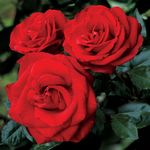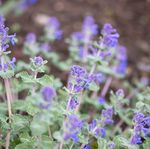Look around your neighborhood or park and find as many of these plants and flowers as you can!
←
→
Page content transcription
If your browser does not render page correctly, please read the page content below
GARDEN
SCAVENGER HUNT
Look around your neighborhood or park and find as
many of these plants and flowers as you can!
Hydrangea astilbe
roses sedum
catmint hosta
shasta
milkweed
daisyLOCAL BLOOMING
FLOWER GUIDE
Belmont Lake State Park plants the following flowers and
plants! Can you find them in the park or around your
neighborhood? How many do you recogonize?
Hydrangea astilbe
Hydrangeas are native to North and South Astilbe native to mountain ravines and
America, China, and Japan. They may be woodlands in Asia and North America. Some
deciduous, which means they lose their leaves species are known by the common name false
each autumn, or evergreen. Hydrangeas bear goat's beard. These hardy herbaceous perennials
white, pink, or bluish flowers. Each small flower are cultivated for their large, handsome, often
grows with many others in large, showy clusters. fern-like foliage and dense, feathery plumes of
They need rich and slightly moist soil. They grow flowers. They are widely adapted to shade and
well in partly shaded places. They flower more water-logged conditions, hence they are
freely in the sun if they have sufficient moisture. particularly associated with pond-side planting.
Hydrangeas are grown from cuttings or seeds.
They bloom from late summer until fall.
sedum roses
Sedum is a perennial plant with thick, succulent Rose is any of a large group of flowers that rank
leaves, fleshy stems, and clusters of star-shaped among the most popular in the world. People
flowers. There are many, many different varieties value roses for their beauty and for the sweet
and species of sedum—also called “stonecrop”— fragrance of many varieties. Wild roses
which makes them suitable for use in almost any commonly grow in gardens and parks. Many
garden design. They’re hardy, easy to care for, states and nations—including England, Iran, and
and beloved by pollinators! (like bees!) the United States—honor the rose as their
official flower. Roses come in many colors,
including shades of pink, red, yellow, white, and
even lavender.LOCAL BLOOMING
FLOWER GUIDE
Belmont Lake State Park plants the following flowers and
plants! Can you find them in the park or around your
neighborhood? How many do you recgonize?
catmint hosta
Catmint is a strong-smelling plant of the Hosta is a genus of plants commonly known as
mint family. It grows to a height of 2 or 3 hostas, plantain lilies and occasionally by the
feet. Catmint has been cultivated for Japanese name gibōshi. Hostas are widely
centuries and used for medical purposes. A cultivated as shade-tolerant foliage plants.
tonic made from the plant is said to be a Slugs, snails, rabbits, and especially deer like
good remedy for colds. hostas almost as much as people do!
milkweed shasta
daisy
Milkweed is a medicinal plant. Its milky sap Shasta daisy flowers provide perky summer
contains cardiac glycosides that may be blooms, offering the look of the traditional
used to treat a variety of heart diseases. daisy. Originally it known as Chrysanthemum
The Monarch butterfly is dependent on x superbum, the plant was renamed and is
Milkweed for nutrition and propagation. now known as Leucanthemum x superbum.
Milkweed sap is the sole food source of the Some may reach 3 feet in height while others
Monarch butterfly larvae. are just a few inches tall.DESIGN YOUR
OWN GARDEN
Using different art supplies - markers, pencils,
crayons, buttons & more, design what your garden
would look like! Make it as colorful as you'd like!MY GARDEN
JOURNAL
Spend a day outside and record all the different
things you noticed in the garden.
TODAY IS: TEMPERATURE:
THE WEATHER IS:
LIST ALL THE
COLORS OF THE
PLANTS AND
TREES YOU SEE:
LIST ALL THE
BUGS YOU SEE
(AND HEAR!)You can also read

























































